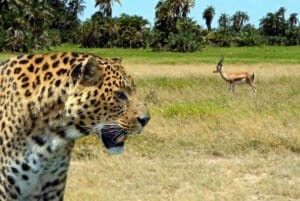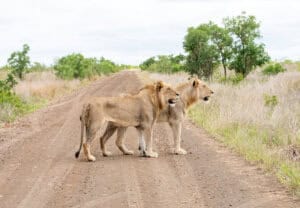The Chinese mountain cat, also known as the Chinese desert cat, inhabits western China near the Tibetan Plateau.
Scientific Name: Felis bieti
Conservation Status: Vulnerable
Lineage – The Chinese mountain cat belongs to the Domestic Cat lineage, which includes the Jungle cat, black-footed cat, sand cat, Chinese mountain cat, European wildcat, African wildcat and domestic cat.
Interesting Chinese mountain cat facts
- Also known as the Chinese desert cat and Chinese steppe cat.
- During the day, they sleep in the burrows of other animals.
- The cat’s scientific name was proposed in 1892.
- Belongs to the Felis (domestic cat) lineage.
- Had a common ancestor with the Asiatic wildcat 1.5 million years ago.
- The first photographs were taken in 2007
Tibetan Plateau
The Tibetan Plateau is an elevated plateau (an area consisting of a raised, flat terrain) surrounded by mountains. The plateau is 620 miles north to south and 1,600 miles east to west. It is where Central, South and East Asia intersect. Many of the ecosystems in the Tibetan Plateau are montain grasslands. There are also tundras (regions without trees because of the high elevation), shrublands and forests. Animals that inhabit the Tibetan Plateau include wild yak, water buffalo, cranes, vutures, hawks, geese, snakes and snow leopards.

More about the Chinese Mountain Cat
Before 2007, information about this rare cat had come from a small number of them living in Chinese zoos. In 2007, the first images of a wild Chinese desert cat were captured in a camera trap in Sichuan (a province in Southwest China) at an elevation of over 11,000 feet. The cat was first identified in 1892 from a skin found in the Sichuan Province.
Physical Appearance
Chinese desert cats have a stocky appearance, with short legs and a bushy tail. They have long hair down to the pads of their feet. The cat’s fur is the color of sand, with barely visible stripes on its legs and face. In Tibet, it is called the “grass cat” because the color of its fur is the color of dry grass in the region. The fur turns darker in the summer. The cat’s lower lip, chin, and belly are white. The ears of the Chinese mountain cat have black tips, and its legs and tail have black rings. The cat is 27 to 33 inches long, with an 11 to 16-inch tail. Adults generally weigh 14 to 16 lbs.
Territory
The cat has been seen roaming in grasslands, meadows, shrublands, and forests at elevations ranging from 8,200 to 16,400 feet. The climate where it has been found is usually extreme, ranging from very hot to very cold.
Hunting and Prey
It appears Chinese desert cats lead solitary lives. They prey on pikas (a cousin of the rabbit), moles, voles, birds, and rodents. They hunt at twilight and during the evening.
Reproduction and Lifespan
A Chinese mountain cat litter contains one to four kittens. The females give birth to the kittens in hidden burrows.
Chinese Mountain Cat Conservation
A significant threat to the Chinese mountain cat is the poisoning of their prey (pika, moles, and voles). The purpose of the poisoning is to reduce population size, but the poison also kills the cats. In more recent studies, free-ranging dogs and genetic contamination from domestic cats are new threats to the Chinese mountain cat’s survival.

Research Quotes
“Our data confirm that this cat is endemic to China, and occurs in montane forest edge, alpine shrubland and meadow habitats. At present it is confined to the provinces of eastern Qinghai and northern Sichuan. Its wild populations are facing a number of threats and environmental pressures such as poaching, use of chemical rodenticides, and environmental changes.” – Distribution and conservation status of the endemic Chinese mountain cat Felis bieti (2004), Li He, et al.


















0 Comments